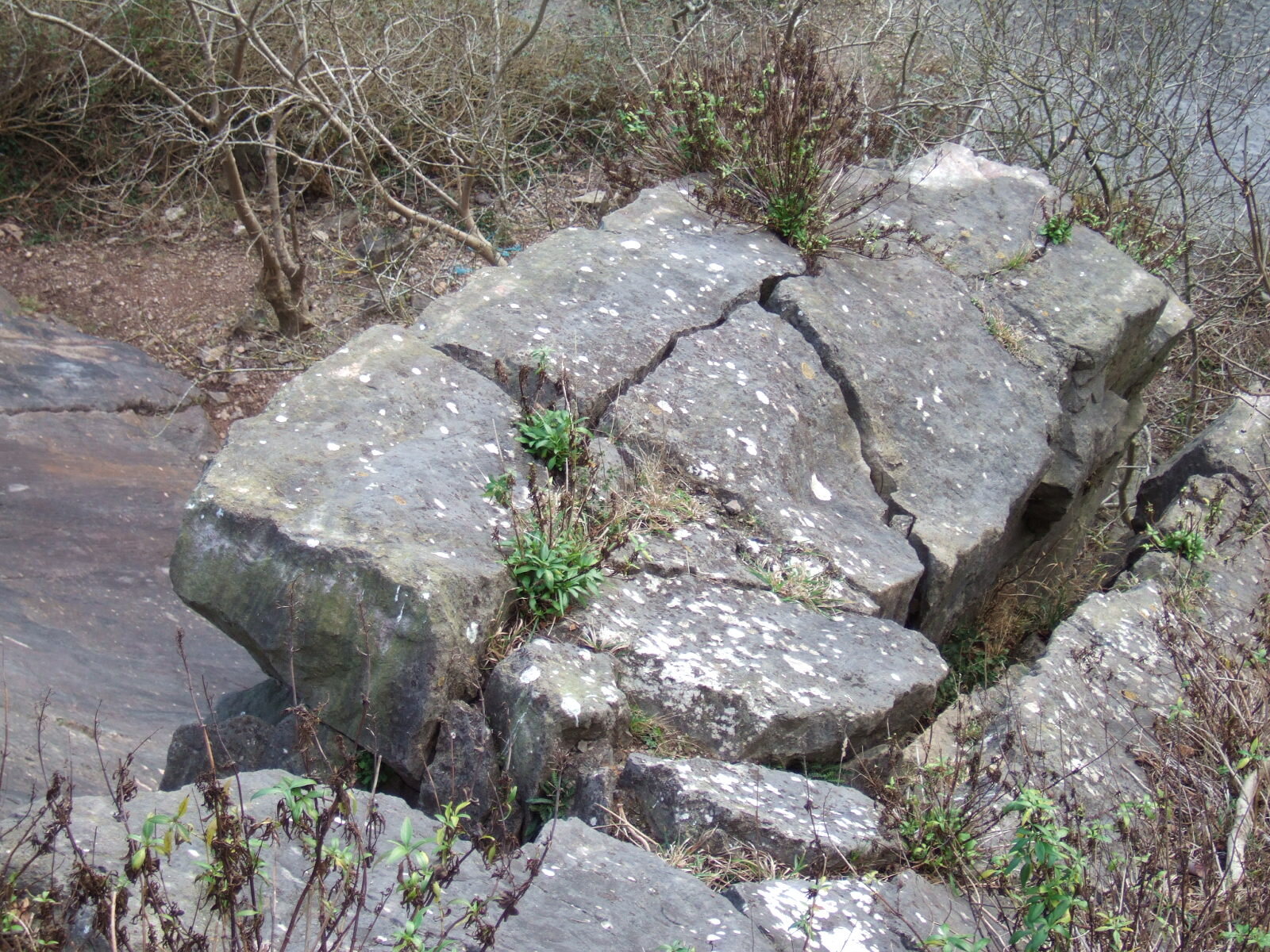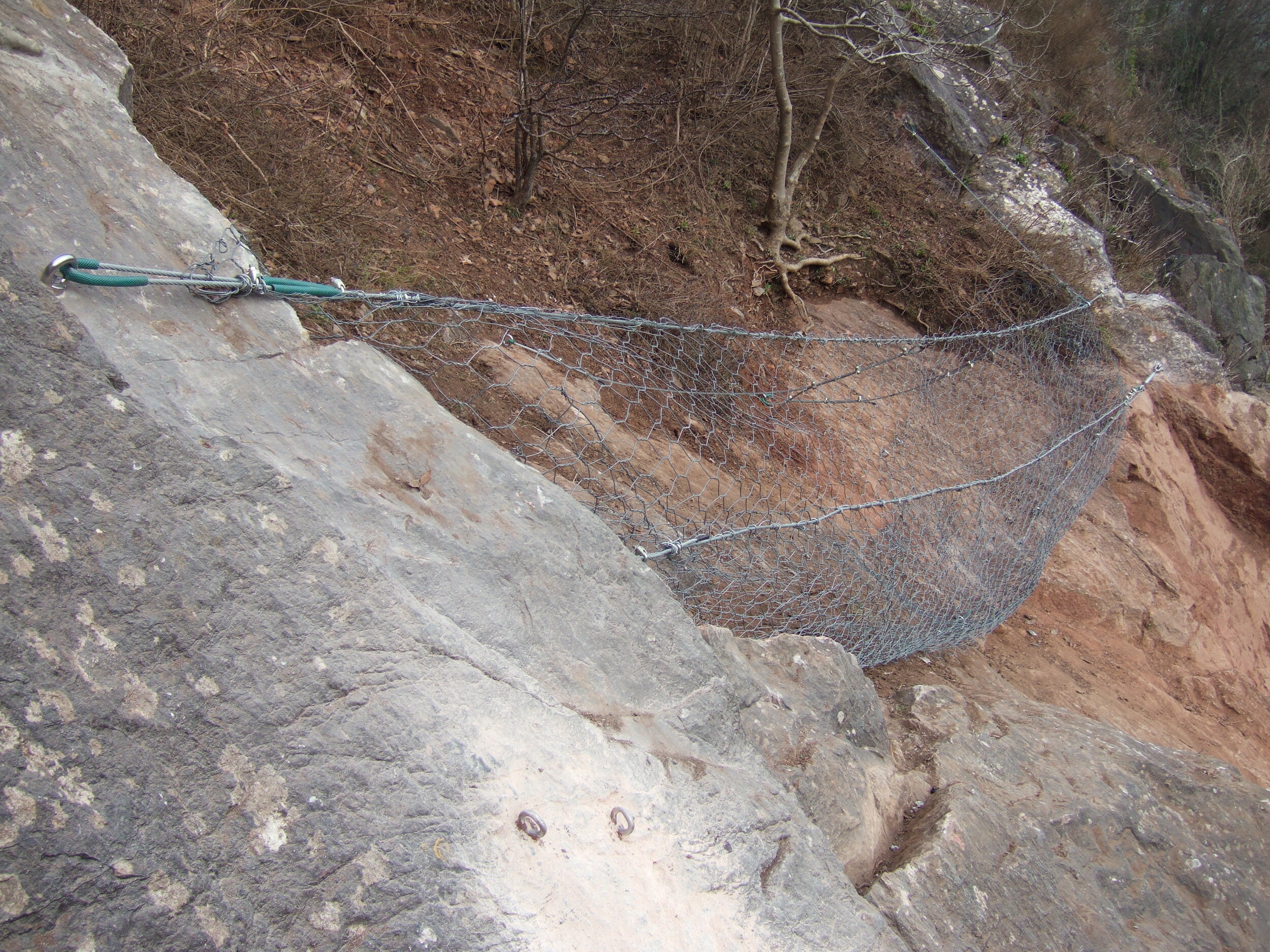Big Bars and Jacks
The 2007 works to Portishead Quarry, in pictures
The background is that the owners of the quarry, Avon Wildlife Trust, were justifiably concerned about the stability of the High Slab section of the quarry, which they accepted was popular with climbers. The BMC asked me to investigate, come up with a remediation plan, and then implement the works on the BMC’s behalf.

High Slab prior to the work

Remember this? The undeniably unstable monster-block, from below.

....which doesn't look any more attached to Mother Earth, from above.

AWT fell the ash trees below the slab, which would have otherwise been destroyed by rockfall.

The exclusion zone is set up

.....but then immediately wrecked by motorbike scramblers; I had to get used to remaking it each morning.

I needed a hand from time to time! Here, Ian Parsons is taking the traditional approach to rock removal - the 'big bar'!

First strike

....which leaves a mess, yet we'd hardly started. Clutching to hopes that the slab would fully recover.

The monster-block would need more than two blokes levering big bars; so some hydraulic jacks were hired in. Suffice to say, we gave them a hard time.

So get pumping!

Creaking and cracking, the block is pushed out.

Jack positions need to be improvised as gaps widen.

That's the capping stone liberated, and off it shoots down (my pride and joy) Brink of Solarity!

The AWT site manager has come to check progress just at the right moment. (Pic: AWT.)

Next day it's back to the main event: the monster-block!

Farewell 'monster', as the landscape changes irrevocably. Unfortunately local residents thought someone was setting off a bomb in the quarry, and the police were called out....

High Slab post rock-scaling phase. A 'Second Rainy Wish' perhaps; but heavy rain is rarely absent from the west country.

Wrecking my car with rolls of Maccaferri wire netting!

Skinny bloke on his own pulleys the rolls of netting up High Slab - phew!

Substantial anchors for the rock-catch fence are drilled and set in resin. (A load of planning went into the fence design and positioning.)

Support cables for the fence are installed.

Netting is attached to the cabling.

The idea being used to exploit the topography and protect against rockfall from the highly fractured headwall.

Bolt belays are drilled for climbers in order to obviate use of the rock-catch fence infrastructure.

Lots of muck grouting on the jigsaw of smaller blocks above Pickpocket.

Rockfall soil all over the slab has to be brushed down. But it proves useful in landscaping the base in order to infill jagged terrain (given the slab's poorly protected starts).

Must aim to improve the boulder-strewn base of the slab. Here's one approach; a New Deal team of apprentices have a go at tugging a few of the boulders.

A more effective, mechanical solution: using a Tirfor winch to achieve much greater pulling power.

Immense forces are required to overcome inertia. The main problem was that fixing points for the winch were few in the quarry floor, and instead of pulling the boulders....

we would sometimes uproot the buddleia!

On walks with my family on Cadbury Camp, in the following few years, I'd guiltily look across at the quarry, still scarred and angry. But then seemingly all of a sudden, when weathering had done its thing, the slab returned to former times; its texture and colour back, and with minimal damage to the climbs. Not the prophetic Fallen Pillar Chimney, mind you, now a caving scramble amongst the boulders.

High Slab, current day

You may some day come across this 'date stamp' in the grout.